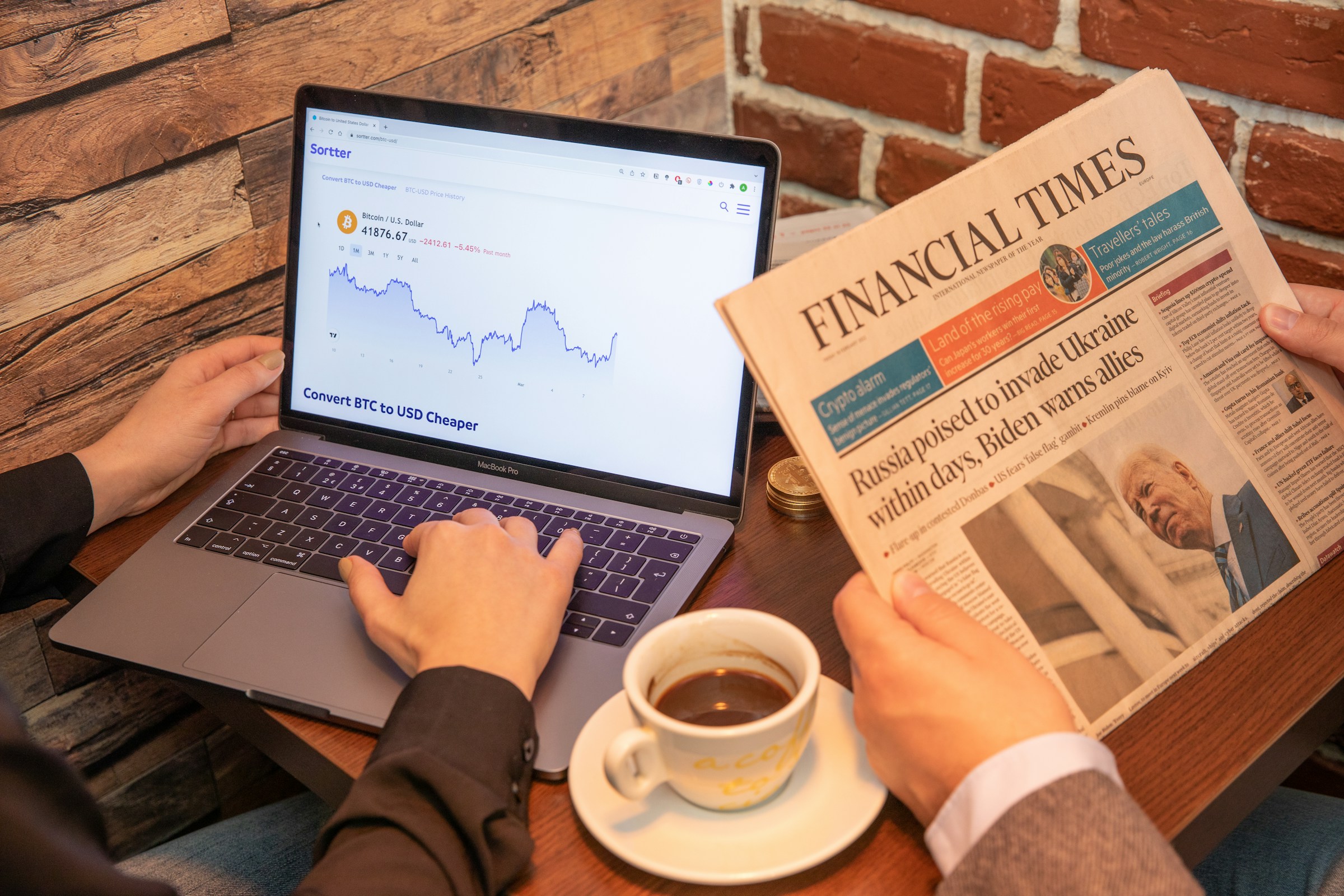The hardest part of investing is not intelligence. It is attention, time, and emotion. You can know what a diversified portfolio should look like, you can understand fees, and you can read about compounding, yet still make choices that undermine your plan. In my work with professionals across Singapore, Hong Kong, and the UK, I see the same pattern over and over again. People are not reckless. They are busy. They are juggling careers and family obligations. They are trying to make good decisions in small pockets of time and often in noisy environments. When you look at investing this way, the question shifts from what to buy to what is getting in the way of the decisions you already know you should make.
One of the first obstacles is fuzzy timelines. Smart investing decisions rely on matching the time horizon of the money with the risk level of the portfolio. When the money you might need in three years sits in the same bucket as the money you will not touch for twenty years, every headline feels like an emergency. You look at a drawdown and think about the school deposit due next spring. You read about a rally and think about retirement in 2050. The mind does not like this kind of blending because it cannot assign a stable purpose to the funds. The result is oscillation. You switch funds and cash levels not because the plan has changed but because the timeline is unclear. The simplest correction is to label your money by purpose and duration and let those labels drive asset choice. Once a portion is genuinely long term, price dips look like weather rather than risk to cash flow.
The second obstacle is goal vagueness. Saving for the future is not a goal. It is a feeling. Goals become useful when you attach numbers and dates to them, even if those numbers are estimates that you refine. A couple planning to retire in the UK will need a different contribution rate than a dual income household in Singapore planning semi retirement in Malaysia. A British expat in Hong Kong who expects to support parents back home has a different risk budget than a single professional in London with a rental flat and no dependents. Without this kind of definition, your brain defaults to external signals for direction. You start treating the market as a mood board. Clear goals anchor you when the noise gets loud. They also make tradeoffs feel more rational. You can say yes to a holiday because your retirement contribution is already automated. You can say no to a speculative idea because it would displace funds meant for near term housing.
A third obstacle is present bias. The human brain values immediate outcomes more than distant ones, which is why an exciting stock tip often feels more compelling than topping up an index fund. Present bias is not a character flaw. It is wiring. The fix is to design around it rather than argue with it. Automatic contributions help because they move the smart decision earlier in the month and turn it into default behavior. Reinvestment settings on dividends help because they remove the moment of debate after each payout. Calendar routines help because they restrict decision making to pre chosen windows. You can tell yourself that you only review your portfolio on the first Saturday of the quarter. If a headline provokes anxiety mid month, it goes into a note to be considered at the next review. This does not eliminate emotion. It gives it a time slot.
A fourth obstacle is information overload. The amount of market content most investors consume is disproportionate to the number of decisions they actually need to make. Watching intraday moves does not improve a multi decade plan. Reading five contrasting opinions does not clarify whether you should increase your U.K. ISA allocation or keep building your Singapore SRS. Information is not the same as insight. The more you scroll, the more you encounter extreme language and compressed time horizons. Even well meaning commentators can push you toward action you do not need. A quieter information diet that privileges primary sources and scheduled reviews tends to produce better behavior. In practical terms, that might look like one portfolio dashboard, one long term market history book, and a quarterly letter from your chosen fund provider. It is less stimulating. It is more useful.
Loss aversion forms the fifth obstacle. Losses feel heavier than gains feel good. This is rational if you are managing survival, but in a long horizon portfolio it can be misleading. The mind will work hard to avoid the discomfort of a red number, even if that discomfort is temporary and expected. You might become overly conservative after a rough year. You might sell a position that is down just to stop seeing the loss, then buy something new and risk repeating the same pattern. The antidote is to normalize expected volatility on a timeframe that matches your goal. You can look at the worst historical drawdown of your chosen allocation and decide in advance whether you could ride through something similar. You can keep a short note that says, I chose 70 percent equities because my retirement is 22 years away and my cash cushion covers emergencies. When the headlines look dramatic, you are not hunting for a new strategy. You are rereading the reasoning behind the one you already set.
Another obstacle is the illusion of precision. Many investors feel safer when they have complex spreadsheets and frequent tweaks. Complexity creates the sensation of control, but it often introduces more opportunities for inconsistent judgment. A portfolio does not get smarter because it has more moving parts. What matters is whether each part serves a purpose and whether the whole can survive periods of neglect. The most resilient plans are often the simplest to operate. A globally diversified stock fund, a high quality bond fund aligned to your near term needs, and a cash reserve in a separate account already solve most problems. The craft is in sizing these elements and automating contributions, not in assembling an intricate mosaic of tactical positions that require constant supervision.
Fees and taxes present quieter obstacles because they rarely demand attention in the moment. Competing apps and products can make it hard to see the true all in cost of an investment. Small annual costs compound in the wrong direction over decades. On the tax side, good intentions can lead to avoidable friction if you hold assets in the wrong wrapper for your jurisdiction. A UK based professional can improve outcomes by maximizing an ISA before taxable investing. A Singapore based professional can use SRS contributions to reduce taxable income while building retirement assets. A Hong Kong based expat with no domestic tax relief might still benefit from efficient global funds and a clear location plan for future withdrawals. None of this is exciting. All of it is structural and therefore powerful.
Social proof is another strong force. When friends, colleagues, or online communities celebrate quick wins, it is easy to feel behind or unlucky. You are not imagining the pull. Humans are social learners. We use other people’s behavior as a shortcut for safety and success. In investing this shortcut often points you toward vehicles that are popular because they have already rallied or because they offer narratives that travel well. Popularity is not the same as suitability. The way to soften the social pressure is to translate other people’s stories into your own plan’s language. If someone shares a big return from a concentrated bet, you can observe it without judgment and ask yourself whether such a position aligns with your timeline, risk budget, and liquidity needs. Most of the time the answer will be no, and you can wish them well and keep contributing to your plan.
Liquidity is easily underestimated. People often say they are long term investors until a near term expense arrives. If your emergency fund is thin, your portfolio becomes a cash machine at the wrong time. If you are saving for a down payment while also trying to build retirement, you can end up selling growth assets during a dip to fund the property when the market clock is not in your favor. Respecting liquidity is not about reducing ambition. It is about sequencing. Build the cash buffer first. Wall off the down payment next. Then let the long term portfolio run with contributions you will not interrupt. When liquidity is secured, patience becomes easier to practice because you are not relying on the market to solve near term obligations.
Past market experiences also shape behavior in ways we rarely notice. Someone who began investing during a strong bull phase can develop an expectation that every dip will be brief and every allocation choice will look smart within months. Someone who started during a choppy period can grow overly skeptical and underinvested for years. Neither pattern is destiny, but both can bias new decisions. The best way to soften this effect is to study longer histories than your personal experience provides and to anchor on process rather than recent outcomes. If you adopt a contribution schedule and a rebalancing rule that you can follow through different market moods, you reduce the influence of any single period on your overall behavior.
Product confusion is an obstacle that masquerades as sophistication. New wrappers and features appear constantly. Some are useful, many are simply repackaged risk. If a product promises safety with high returns, it is either miscommunicated or misunderstood. If a strategy sounds like a sure thing, it probably relies on conditions that will not hold forever. You do not need to master every innovation to be a good investor. You need a small set of instruments that you understand well enough to hold through difficulty. The most elegant portfolios are not those with clever features. They are those you can explain to a friend without notes.
Decision fatigue affects investing like it affects any part of life. Every extra choice is a toll on attention. If your plan requires frequent parameter changes, you will burn through decision energy and default to doing nothing until anxiety pushes you into doing too much. Designing a routine that reduces choice can feel restrictive at first, but it is actually liberating. You can pre decide contribution dates, rebalancing thresholds, and review cadence. You can pre decide that no allocation change occurs without two sleep cycles. You can pre decide that new ideas go into a watchlist for thirty days. You will still adapt when your life changes. You will simply avoid improvisational investing driven by mood.
Currency and home bias complicate judgment for globally mobile professionals. It is natural to favor assets priced in the currency you earn or the market you read about daily. It is also natural to anchor on the market where you expect to retire. Home bias can be comfortable, but it increases concentration risk. If your income, property, and investments all live in the same economy, a local downturn hits you on three fronts. A clearer approach is to define where your liabilities will sit over the next decade and then ensure that your asset base has enough global exposure to cushion local shocks. You do not need to abandon the familiar. You do need to complement it.
Finally, anxiety is underestimated. Many people think they are bad at investing because they feel nervous. The truth is that nervousness is appropriate when you care about outcomes and cannot control timing. You are not trying to eliminate emotion. You are trying to contain it. The practices that help are gentle ones. Separate accounts for different goals reduce the sensation of everything riding on one number. Regular but infrequent reviews create rhythm without obsession. Writing down your plan turns intention into something you can revisit when memory edits the past. Speaking with a fiduciary aligned adviser gives you a second set of eyes when your personal life changes and your plan needs to adjust.
If you recognize yourself in any of these obstacles, the next step is not to overhaul everything. It is to change one design element that unlocks better behavior. You might start by labeling accounts by purpose and time. You might automate a slightly higher monthly contribution to align with your updated goal. You might put a quarterly review on your calendar and commit to leaving the portfolio alone between those dates. You might simplify your information diet to one high quality source and one long view book. You might decide that before any allocation change you will sleep on it twice. Small rules like these are not dramatic. They are the scaffolding that supports good decisions when life is busy and markets are loud.
The phrase smart investing decisions can feel intimidating, as if it requires secret insight or flawless timing. In practice, it means something gentler and more durable. It means choices that match your purpose, timelines that respect your life, and routines that calm your attention so you can keep going. You do not need to be aggressive. You need to be aligned. You do not need to predict. You need to prepare. Most of what gets in the way is not an absence of intelligence. It is an absence of structure. Build that structure bit by bit and let time do its work. The smartest plans are rarely loud. They are consistent.





.jpg&w=3840&q=75)

-1.jpg&w=3840&q=75)
-3.jpg&w=3840&q=75)



.jpg&w=3840&q=75)
.jpg&w=3840&q=75)
